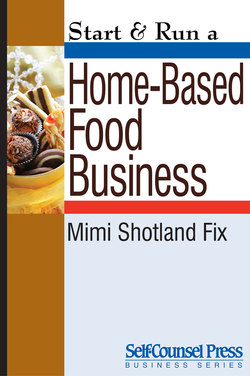Читать книгу Start & Run a Home-Based Food Business - Mimi Shotland Fix - Страница 11
На сайте Литреса книга снята с продажи.
3. Get the Rental Agreement in Writing
ОглавлениеIt is very important to have a signed agreement that is specific to your needs and the needs of the owner of the subletting business. Your business depends on your ability to use the facility for production. A lease agreement will protect both parties.
If the owner objects to a formal agreement, mention that an agreement protects him or her as well as you. I would be very suspicious of anyone who refuses this request. Anyone who objects to a written agreement usually isn’t a good choice for business dealings.
Occasionally an informal agreement works, but it basically relies more on honor of fulfillment rather than an enforceable written contract. Issues often arise with an informed agreement and bad feelings can happen, especially when money is involved.
A written agreement can help clear up any misunderstandings that might occur. It doesn’t need to be anything fancy, just a list of agreed terms. Even if you’re bartering for the space (e.g., you pay the owner or business in cakes and cookies), it’s best to have a written agreement because it protects everyone. Don’t forget to make two copies, dated and signed by both parties. For added protection, be sure to have a witness to the signatures.
In your contract you will need to clearly describe the following:
• Specify times when you can use the space.
• Define what the rent is and when it will be paid (e.g., monthly, quarterly, or on a per-use basis). You may also want to include how the rent is to be paid (e.g., $50 per month plus a dozen muffins each time the space is used).
• Discuss how the utility costs will be divided (e.g., percentage of the utilities, flat monthly fee, or included in the rent).
• Licensing: The agreement should include the current license number or the name of the licensing agency for the facility.
• Detail what equipment and supplies you can use.
• Define who will be responsible for breakage or nonfunctioning equipment.
• Specify who is responsible for clean up. For example, what if the oven is filthy or the sink is clogged before you arrive?
• Discuss storage of your items. Will there be secured cabinets to avoid pilfering or contamination of your property?
• Include information about insurance coverage. Are you covered under the owner’s insurance or do you need your own?
Include anything else, no matter how silly you feel about mentioning it (e.g., where to park if it’s within a city district). Little things can potentially become big problems if they are not discussed in the written agreement.
Basic Buttermilk Muffin Batter
Yield: Makes 6 large or 12 medium muffins
• 1–2 cups total additions (dried or seasonal fruit, chopped; nuts or coconut)
• 1 large egg
• 1/3 cup oil
• 1/2 teaspoon baking soda
• 1/3 cup granulated sugar
• 1 cup buttermilk (or 7/8 cup milk with 2 tablespoons vinegar or lemon juice)
• 2 teaspoons vanilla
• 2 1/2 cups all-purpose unbleached flour
• 2 teaspoons baking powder
• 1/2 teaspoon salt
Prepare the additions and set aside.
Preheat oven to 375ºF and line the muffin pan with paper cups or use pan spray.
In a medium bowl, beat together the egg, oil, sugar, buttermilk, and vanilla. In a separate bowl, stir together the flour, baking powder, baking soda, and salt.
Pour the dry ingredients on top of the wet and stir gently until mixed. Some small lumps are okay. Then stir in the prepared fruit or other additions. This should be a thick batter.
Divide batter into 12 medium or 6 large muffins, filling the pans almost to the top.
Bake for 20 to 30 minutes depending on size. Turn down the oven heat if the tops are getting too brown. They will be done when a finger pressed gently on top leaves no imprint.
Cool thoroughly before wrapping and storing. These keep for two days; can be frozen for up to six months.
